Why the Strong U.S. Dollar Scares Investors
Up 24% against major currencies since May 2014, the greenback is putting pressure on earnings of U.S. exporters and multinationals.

Why has the dollar been so strong? A number of reasons. Our economy has been strengthening, especially relative to the economies of Europe and Japan—and even compared with the economy of China, where the rate of growth outpaces ours but is slowing. Our trade balance has improved, thanks to a boom in energy production, which has drastically cut oil imports. At the same time, the U.S. budget deficit is shrinking. That all helps to attract investment in the U.S. But a huge impetus for the surging dollar is the gap between interest rates here and abroad. The 1.9% yield on the 10-year Treasury bond may seem paltry, but it beats 0.2% on Germany’s 10-year note and 0.4% on Japan’s. That situation is unlikely to change soon. The Federal Reserve is the only major central bank expected to raise rates this year; many others have cut rates or are providing monetary stimulus in other ways.
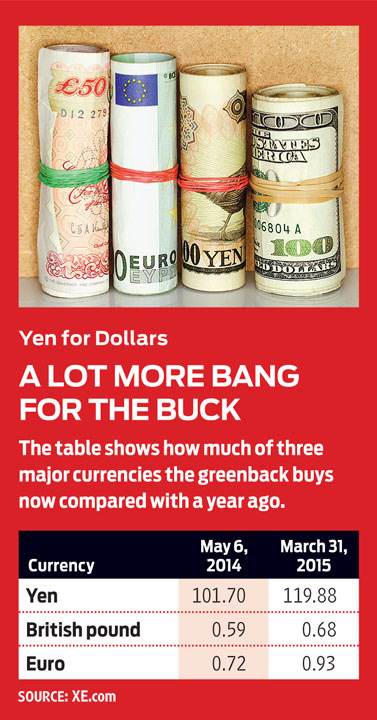
How does a strong dollar affect the world’s economies? A stronger dollar has been a lifeline for struggling economies in Europe and Japan, boosting exports, relieving deflationary pressures and lifting global growth in general. But a beefier greenback is bad news for financially stressed countries with high debt burdens denominated in dollars. In that camp put South Africa, Turkey and Venezuela. Because oil and other commodities are priced in dollars, the currency’s strength hurts commodity exporters (such as Brazil and Russia) while helping heavy commodity users (China). In the U.S., the economic impact of a stronger dollar will likely be modest; figure that every 20% rise in the dollar might shave a half-point from growth in gross domestic product. The brawny buck detracts from growth because it hurts sales of U.S. exporters, whose products become more expensive overseas. By the same token, imports get cheaper, and that helps boost consumers’ purchasing power—and their spending accounts for 68% of U.S. GDP.
What does the super buck mean for U.S. investors? Over the long haul, not much. The direction of the dollar isn’t a reliable predictor of stock prices in itself. For example, stock prices and the value of the dollar rose simultaneously between 1980 and 1985, but moved in opposite directions from 1985 to 1987. From 1995 to 2001, both were on the upswing, but from 2001 to 2008, the dollar sank and stocks rose. Since 2011, the dollar and stocks have risen in tandem. At the sector level, though, a rising dollar seems to favor stocks of companies that depend on consumer spending on non-necessities (think retailers and restaurants) and financial firms, while energy companies thrive when the currency is weak.
From just $107.88 $24.99 for Kiplinger Personal Finance
Become a smarter, better informed investor. Subscribe from just $107.88 $24.99, plus get up to 4 Special Issues

Sign up for Kiplinger’s Free Newsletters
Profit and prosper with the best of expert advice on investing, taxes, retirement, personal finance and more - straight to your e-mail.
Profit and prosper with the best of expert advice - straight to your e-mail.
Then why has dollar news been roiling the U.S. stock market? Investors worry about the hit to the earnings of U.S. exporters and multinationals. A strong greenback hurts firms with foreign operations because sales and profits generated abroad translate into fewer dollars. Overall, firms in Standard & Poor’s 500-stock index derive 46% of sales overseas; for energy and materials companies, it’s a bit more than that. Technology firms depend on foreign sales for 56% of revenues. In January, analysts expected that earnings for tech companies would rise more than 10% in 2015; forecasts now call for growth of just 6%. Firms warning that the stronger dollar will hurt 2015 results range from DuPont to PepsiCo.
How much more can the dollar appreciate? Most of the move has been made. In fact, some analysts think the dollar has already peaked. For the dollar and euro to be at parity—that is, one dollar equals one euro—the buck would have to increase 8%. To expect that to happen seems a stretch, at least for now.
Profit and prosper with the best of Kiplinger's advice on investing, taxes, retirement, personal finance and much more. Delivered daily. Enter your email in the box and click Sign Me Up.

Anne Kates Smith brings Wall Street to Main Street, with decades of experience covering investments and personal finance for real people trying to navigate fast-changing markets, preserve financial security or plan for the future. She oversees the magazine's investing coverage, authors Kiplinger’s biannual stock-market outlooks and writes the "Your Mind and Your Money" column, a take on behavioral finance and how investors can get out of their own way. Smith began her journalism career as a writer and columnist for USA Today. Prior to joining Kiplinger, she was a senior editor at U.S. News & World Report and a contributing columnist for TheStreet. Smith is a graduate of St. John's College in Annapolis, Md., the third-oldest college in America.
-
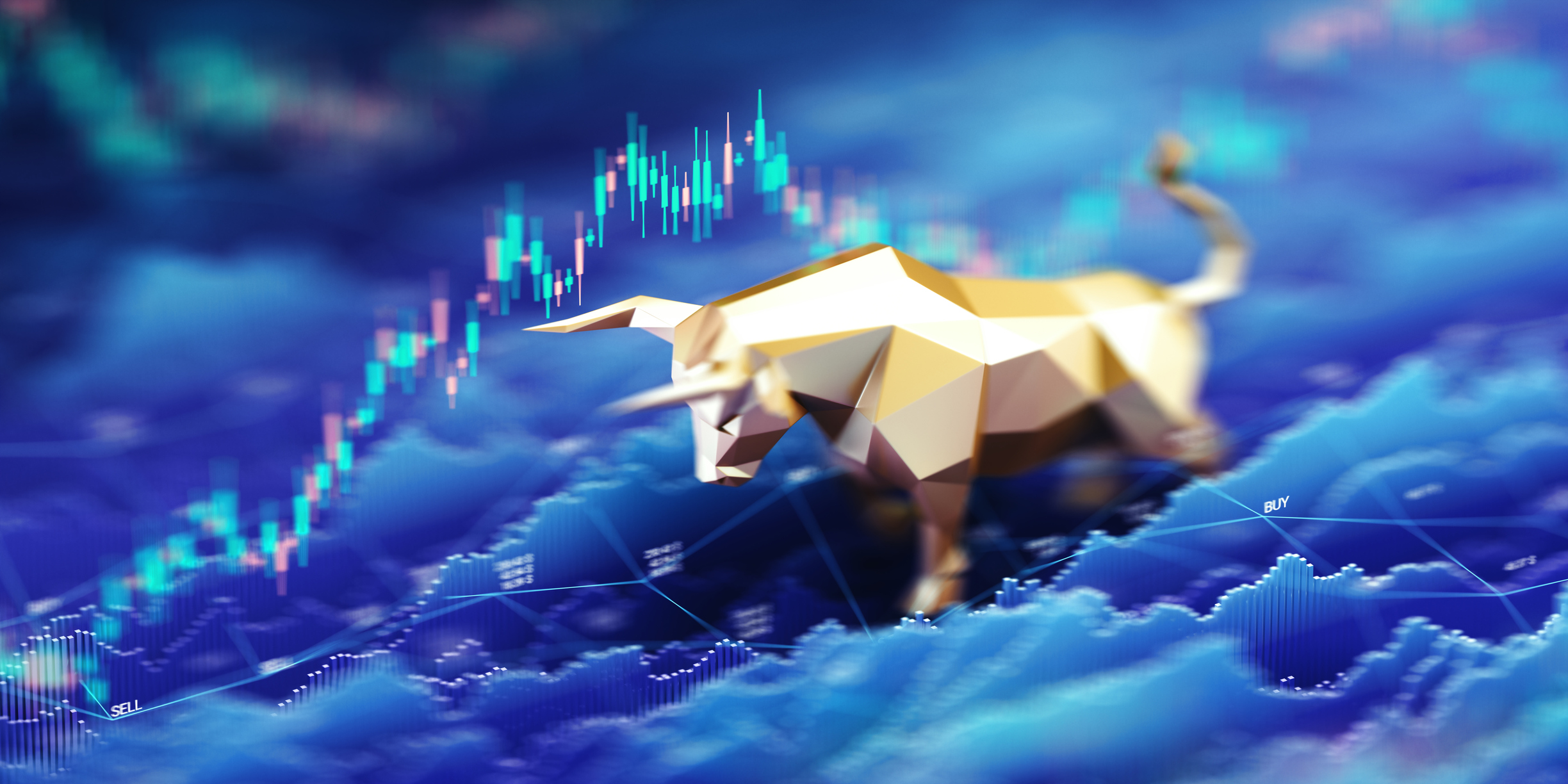 'Humbug!' Say Consumers, Despite Hot GDP: Stock Market Today
'Humbug!' Say Consumers, Despite Hot GDP: Stock Market Today"The stock market is not the economy," they say, but both things are up. Yet one survey says people are still feeling down in the middle of this complex season.
-
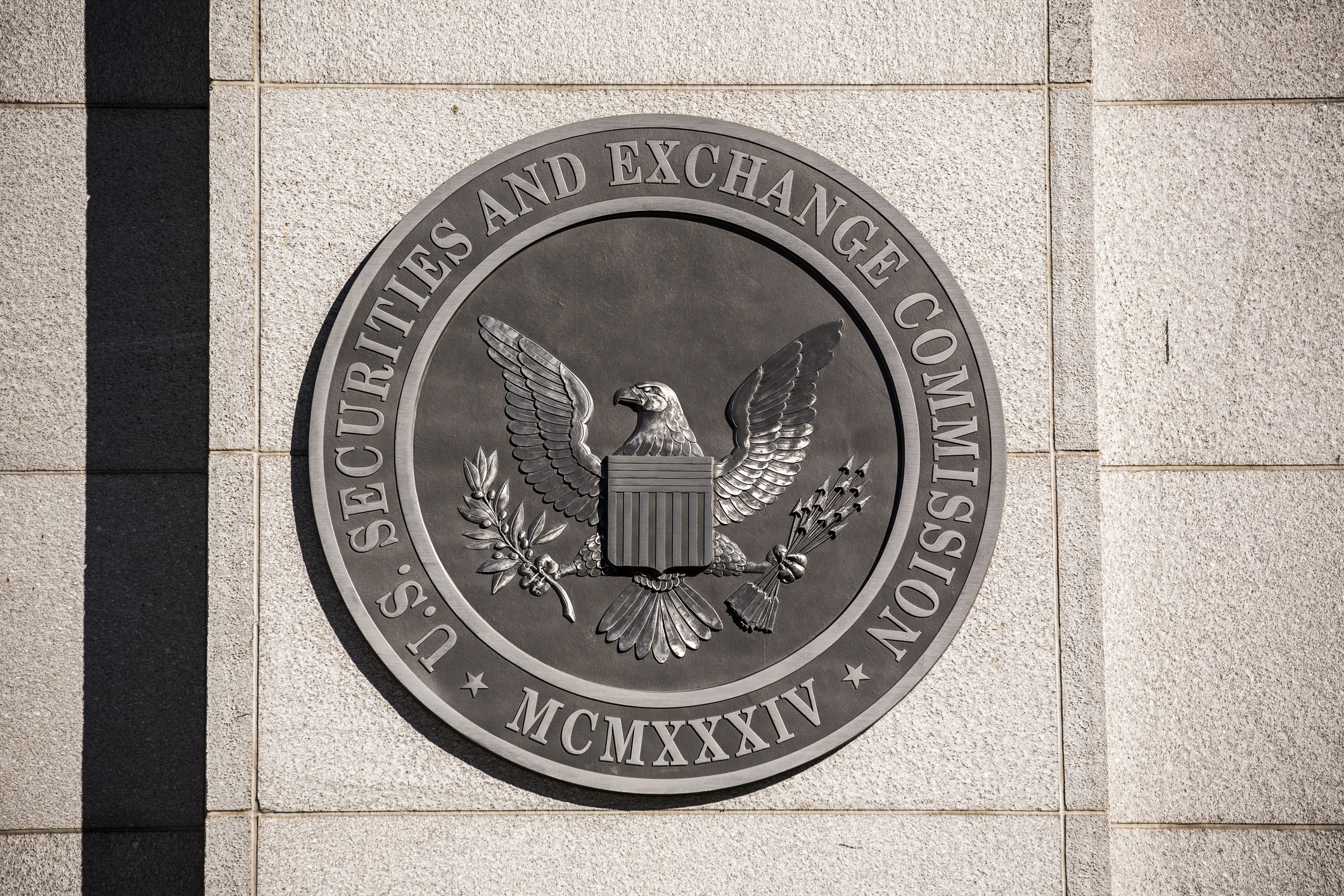 The SEC Is Concerned for Older Investors and Retirement Savers. Here's What You Should Know
The SEC Is Concerned for Older Investors and Retirement Savers. Here's What You Should KnowThe SEC focusing on older investors, retirement and college savers, and private securities. Here's how those changes impact you.
-
 Vesting, Catch-Ups and Roths: The 401(k) Knowledge Quiz
Vesting, Catch-Ups and Roths: The 401(k) Knowledge QuizQuiz Test your understanding of key 401(k) concepts with our quick quiz.
-
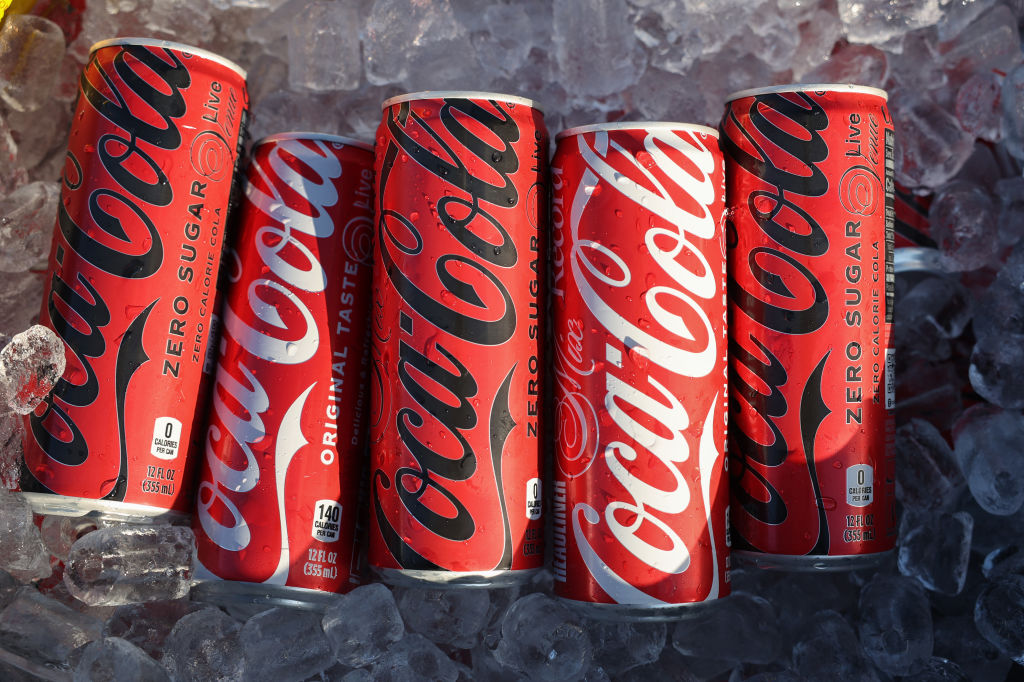 If You'd Put $1,000 Into Coca-Cola Stock 20 Years Ago, Here's What You'd Have Today
If You'd Put $1,000 Into Coca-Cola Stock 20 Years Ago, Here's What You'd Have TodayEven with its reliable dividend growth and generous stock buybacks, Coca-Cola has underperformed the broad market in the long term.
-
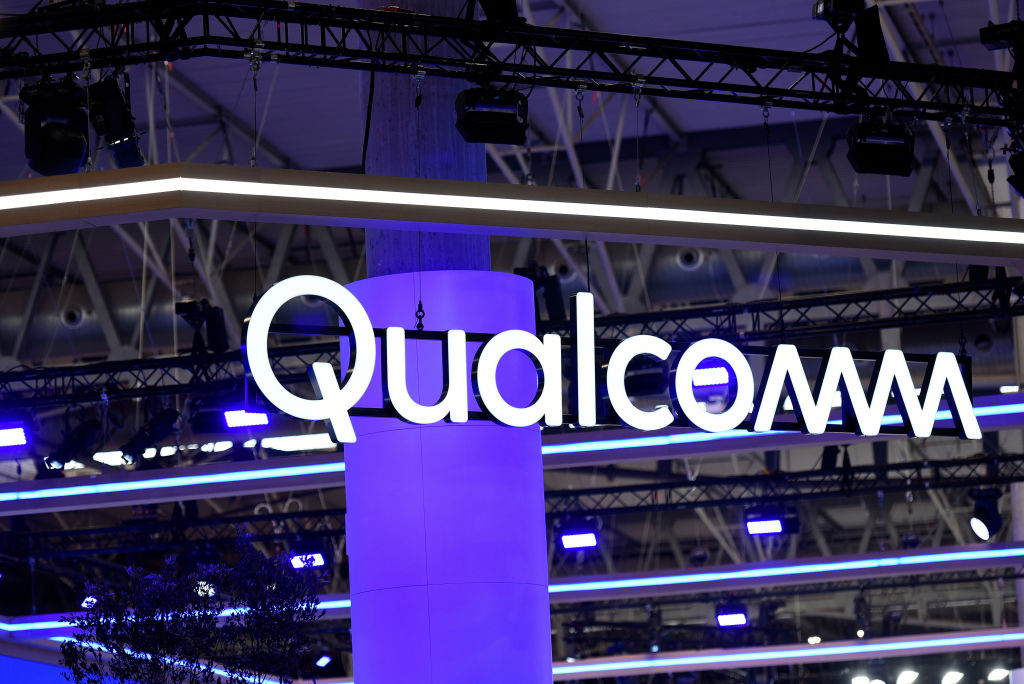 If You Put $1,000 into Qualcomm Stock 20 Years Ago, Here's What You Would Have Today
If You Put $1,000 into Qualcomm Stock 20 Years Ago, Here's What You Would Have TodayQualcomm stock has been a big disappointment for truly long-term investors.
-
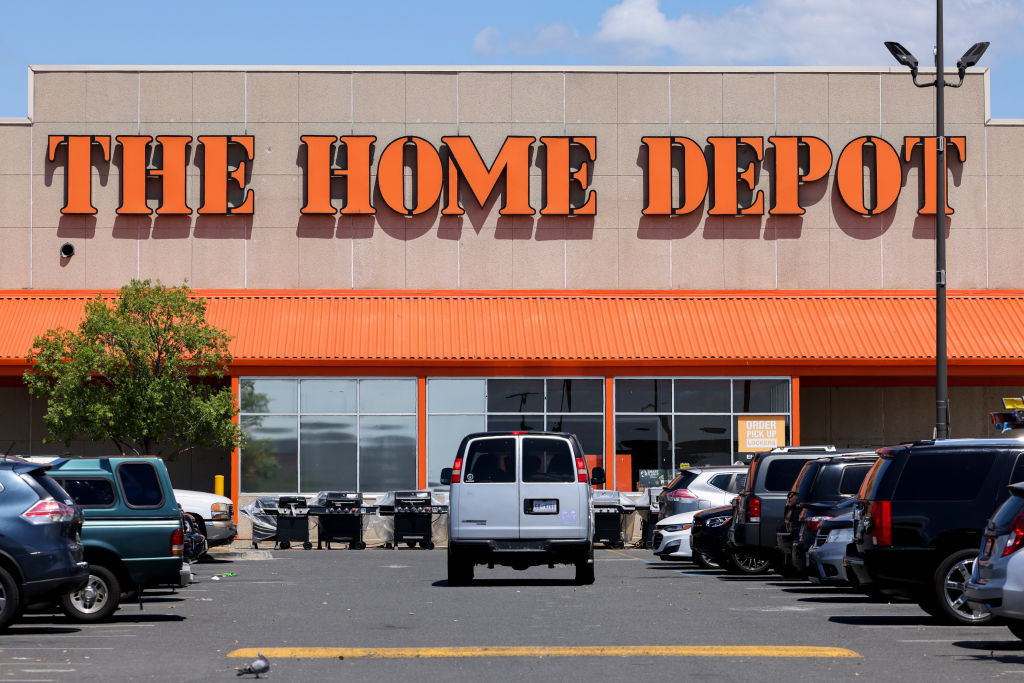 If You'd Put $1,000 Into Home Depot Stock 20 Years Ago, Here's What You'd Have Today
If You'd Put $1,000 Into Home Depot Stock 20 Years Ago, Here's What You'd Have TodayHome Depot stock has been a buy-and-hold banger for truly long-term investors.
-
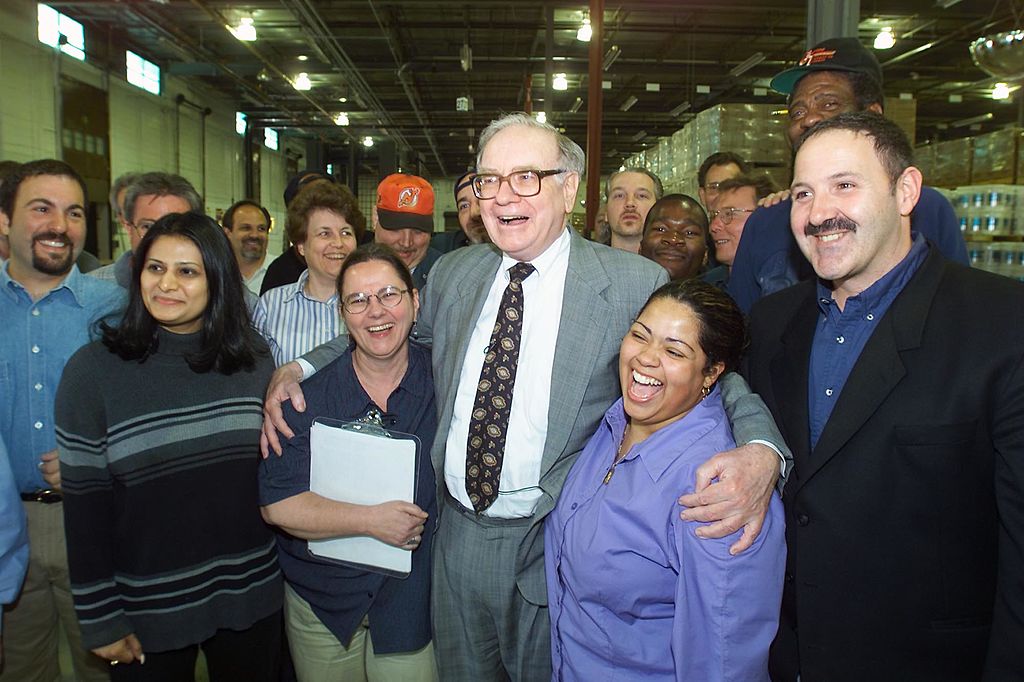 What the Rich Know About Investing That You Don't
What the Rich Know About Investing That You Don'tPeople like Warren Buffett become people like Warren Buffett by following basic rules and being disciplined. Here's how to accumulate real wealth.
-
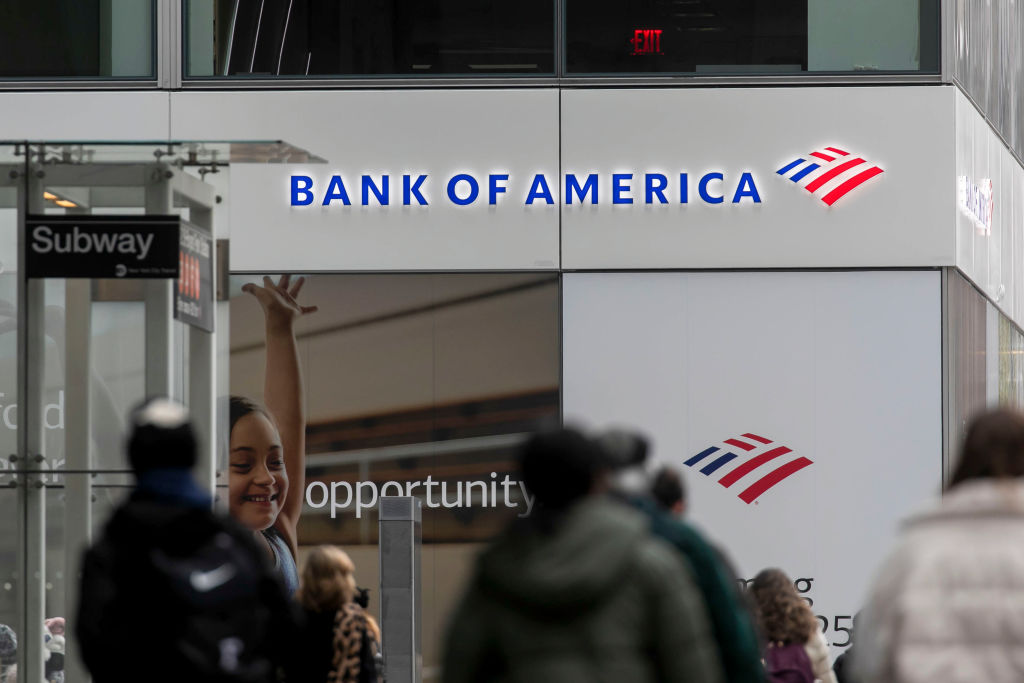 If You'd Put $1,000 Into Bank of America Stock 20 Years Ago, Here's What You'd Have Today
If You'd Put $1,000 Into Bank of America Stock 20 Years Ago, Here's What You'd Have TodayBank of America stock has been a massive buy-and-hold bust.
-

 If You'd Put $1,000 Into Oracle Stock 20 Years Ago, Here's What You'd Have Today
If You'd Put $1,000 Into Oracle Stock 20 Years Ago, Here's What You'd Have TodayORCL Oracle stock has been an outstanding buy-and-hold bet for decades.
-
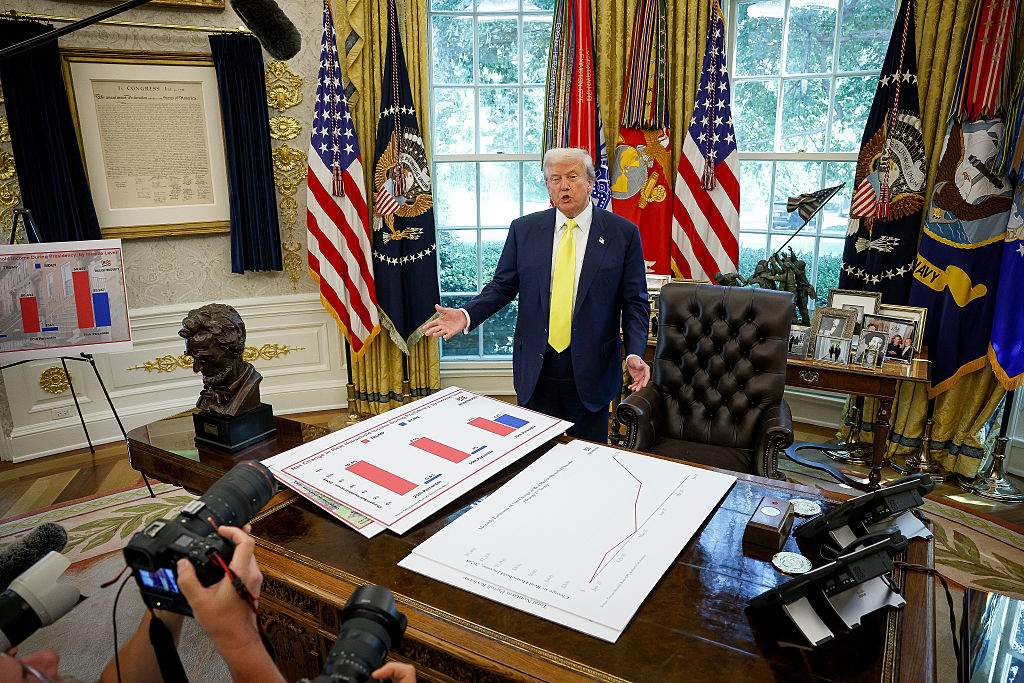 How to Invest for Rising Data Integrity Risk
How to Invest for Rising Data Integrity RiskAmid a broad assault on venerable institutions, President Trump has targeted agencies responsible for data critical to markets. How should investors respond?
-
 If You'd Put $1,000 Into Sherwin-Williams Stock 20 Years Ago, Here's What You'd Have Today
If You'd Put $1,000 Into Sherwin-Williams Stock 20 Years Ago, Here's What You'd Have TodaySherwin-Williams stock has clobbered the broader market by a wide margin for a long time.